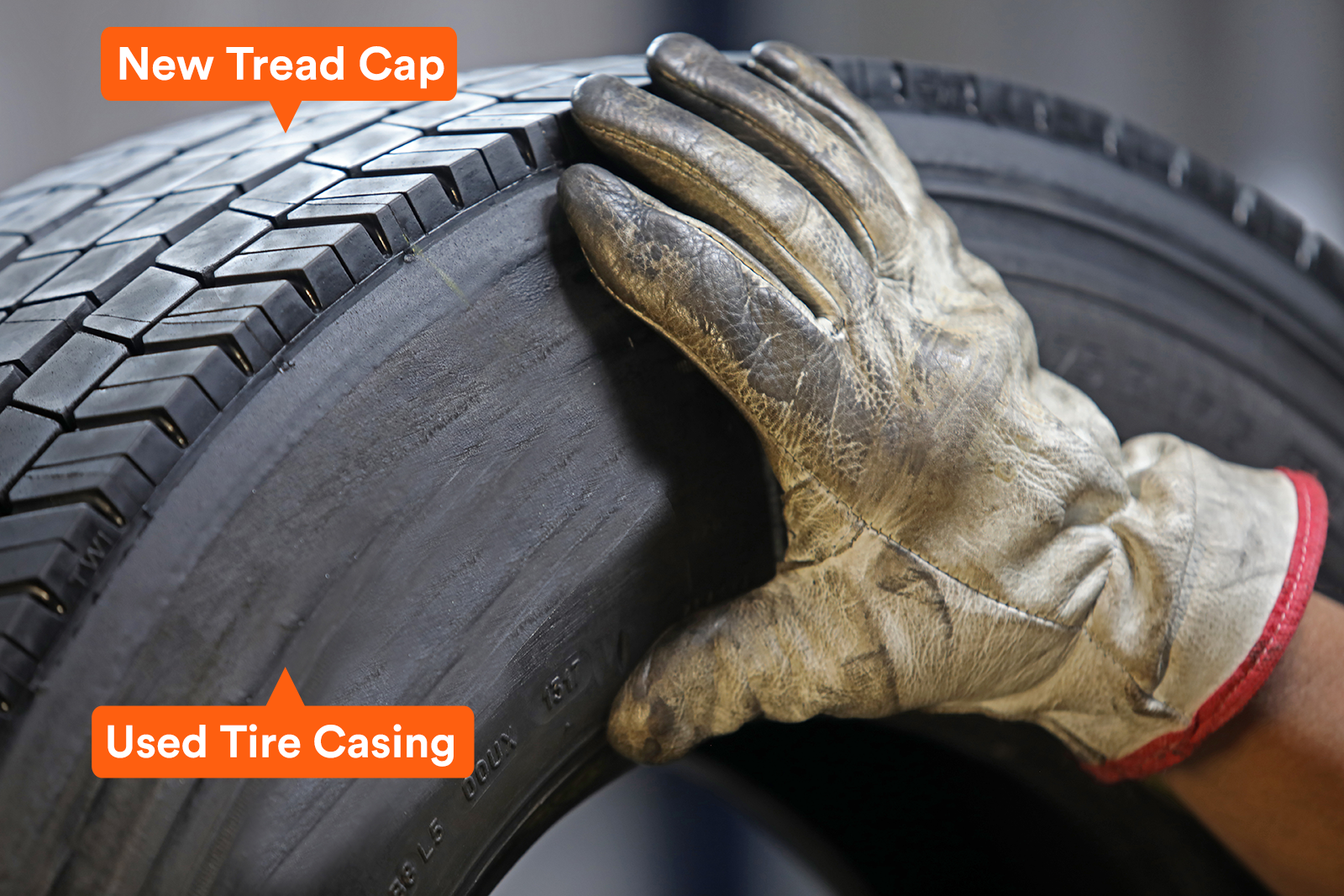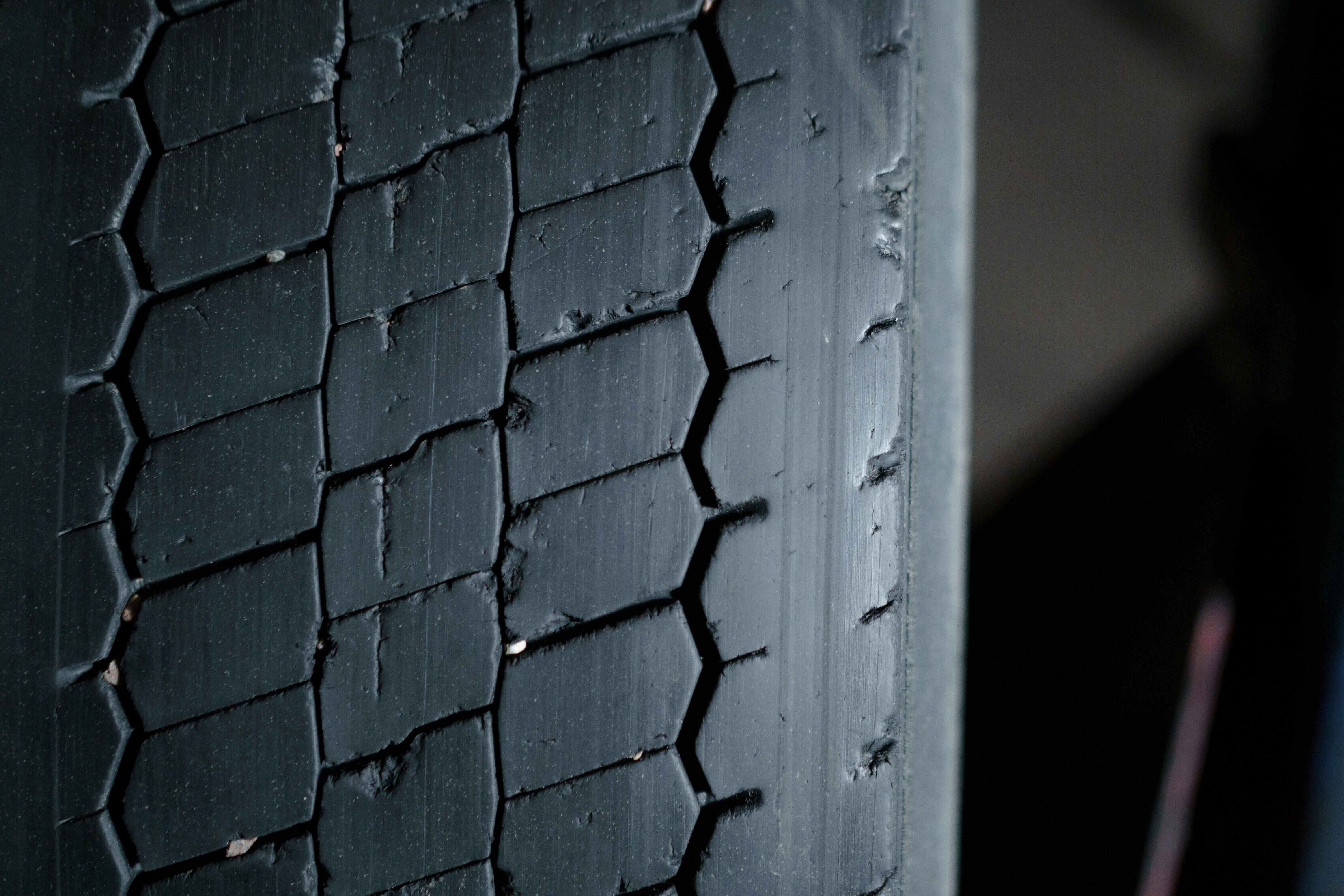Tire News & Information
Free shipping
Best price guarantee
Special pricing
Financing with Resolve
Easy returns

Tire retreading, also known as recapping or remolding, is a process that gives worn-out tire casings a new lease on life by replacing the old tread with a fresh one. This innovative method is not only cost-effective but also significantly reduces the environmental impact associated with tire disposal and manufacturing.
Many eco-conscious drivers are turning to retreading tires as a sustainable option that offers numerous benefits. From saving money to helping the environment, there are plenty of reasons to consider retread tires.
If you're interested in learning more about retread tires, you've come to the right place! Keep reading to find out what you need to know about retreading tires, from the process to the benefits retread tires provide and more.
What are Retread Tires?
Retread tires, also known as recap tires or remolded tires, are worn tires that have undergone a remanufacturing process to replace the old tread with new tread. The process involves buffing away the remaining tread, repairing any damage, and applying a new tread to the existing tire casing—extending the life of the tire while maintaining safety and performance standards similar to new tires.
The tire retreading process begins with a careful inspection of used tires to ensure they are suitable for retreading. Upon selecting the tires, a technician buffs away the old, worn-out tread to create a smooth, even surface and repairs any minor damage to ensure the tire's structural integrity.
Next, a layer of bonding rubber is applied to the prepared surface before fitting the tire with a pre-molded tread or new tread rubber using either the pre-cure or mold-cure method. The tire is then vulcanized, allowing the new tread to bond securely with the existing casing. Finally, the finished retreaded tire undergoes a thorough inspection to ensure it meets rigorous safety and quality standards comparable to new tires.
By choosing retreaded tires from reputable retailers vehicle owners can enjoy the many benefits of retread tires without sacrificing performance or reliability. With advancements in retreading technology and strict quality control measures, retread tires offer an affordable, eco-friendly alternative to new tires while delivering optimal safety and durability on the road.
The Benefits of Retread Tires
Cost Savings
Retread tires present a significant opportunity for cost reduction, often priced at half the cost of new tires. This makes them an attractive option for those managing expenses, particularly for fleet operators who need to maintain a large number of vehicles. By utilizing existing tire casings, retreading allows substantial financial savings without sacrificing the essential qualities of safety and reliability.
Environmental Impact
Choosing retread tires contributes positively to environmental conservation. By keeping tires in use longer, retreading reduces the number of tires that end up in landfills and decreases the demand for new raw materials. This process significantly lowers the environmental footprint by conserving resources like rubber and oil, promoting a more sustainable approach to tire usage.
Performance and Durability
Retread tires are crafted to meet stringent quality standards, ensuring they deliver performance comparable to new tires. With advancements in retreading technology, these tires have become a dependable choice for various driving conditions. Proper maintenance allows retread tires to achieve a lifespan similar to new tires, offering reliable performance and peace of mind for drivers.
How are Retread Tires Made?
The retreading journey begins with a detailed evaluation of the tire's casing. Experts utilize advanced methods to detect any hidden issues that might compromise the retread's integrity. Only casings that pass this stringent examination move forward, ensuring the foundation for a successful retread.
Following the inspection, technicians remove the worn tread, revealing a fresh surface. This step involves precision machinery that prepares the tire for new life by smoothing out the surface and addressing any small imperfections. This preparation is crucial for ensuring a strong bond with the new tread.
A specialized bonding layer is then applied to the casing. Subsequently, the new tread, available in various forms to suit different needs, is expertly aligned with the casing. The tire then undergoes a curing process, which uses a combination of heat and pressure to fuse the new tread securely. This ensures the tire can withstand diverse driving conditions. The final stage involves a comprehensive quality check, confirming that the retreaded tire meets all safety and performance criteria, ready to hit the road with confidence.
Industries that Benefit from Retread Tires
Commercial Trucking and Logistics
The commercial trucking and logistics sector thrives on maximizing efficiency while managing costs. For these companies, retread tires offer a smart solution to keep their fleets running smoothly. With the high mileage that trucks endure, retread tires provide a cost-effective alternative to new tires, allowing companies to redirect funds toward other crucial aspects of their operations. This approach enhances the bottom line without sacrificing the essential qualities of safety and dependability on the road.
Public Transportation
In the realm of public transportation, including buses and taxis, maintaining reliability and affordability is key. Retread tires deliver the necessary performance to handle the rigors of city driving, ensuring consistent service while keeping expenses in check. By choosing retread tires, public transport systems can continue to offer accessible and budget-friendly services to the communities they serve, all while promoting a sustainable approach to tire usage.
Construction, Agriculture, and Aviation
Industries such as construction, agriculture, and aviation require tires that can endure tough conditions and support heavy machinery. Retread tires meet these demands by offering robust performance for off-road and high-stress environments. In construction, they withstand the challenges of rugged terrains, while in agriculture, they support essential equipment through varied landscapes. In aviation, ground support vehicles rely on retread tires for dependable operation. Across these fields, retread tires provide a durable and environmentally responsible choice that aligns with the industry's focus on sustainability and cost management.
What to Consider When Choosing Retread Tires

Evaluating the condition of the tire is a crucial first step in selecting retread tires. Only tires with structurally sound casings are suitable for retreading, ensuring they can withstand the bonding process of new tread. This assessment, which involves checking for any significant cuts or damage, is vital for the tire's future performance and safety. A robust casing supports the new tread and helps maintain the tire's longevity.
Selecting a retreading provider with a stellar reputation ensures high-quality results. Facilities with advanced technology and stringent standards deliver reliable retread tires that adhere to safety regulations. Opt for providers known for their consistent quality and transparency. This choice is integral to gaining confidence in the durability and safety of retread tires.
Understanding your driving patterns and conditions will guide your choice of tread pattern. Whether you navigate city streets, rural roads, or highways, the tread must match these needs to provide optimal traction and efficiency. Opting for a tread design that suits your driving environment enhances handling and fuel efficiency. This tailored approach ensures the tires perform effectively under your usual conditions.
Routine upkeep is essential for maximizing the benefits of retread tires. Ensuring correct tire pressure and routine rotations are key to maintaining even wear and extending tire life. Overlooking these practices can diminish tire performance and safety. Prioritizing regular maintenance helps retread tires achieve their potential, offering reliability akin to new options. While retread tires offer numerous advantages, they might not suit every vehicle type or road condition. Assess the specific demands of your vehicle to determine if retread tires are appropriate. This thoughtful evaluation ensures you select a solution that aligns with your needs while balancing cost and performance.
Where to Find Quality Retread Tires
Exploring the landscape of retread tires involves considering both digital platforms and physical outlets. Numerous tire retailers now provide a diverse array of retread options tailored to different vehicle needs. The convenience of online shopping allows for easy comparison of options, ensuring you find the perfect fit for your vehicle without leaving home.
For those seeking precise solutions, specialized retreading businesses offer custom options. These facilities excel in meeting unique requirements for sectors like commercial trucking and agriculture. By engaging with these businesses, you can ensure that your retread tires are crafted to meet specific performance expectations, enhancing both longevity and reliability.
When evaluating potential retailers, prioritize those that offer robust guarantees and demonstrate a commitment to quality. Reliable sellers clearly outline their retreading methods and quality assurance processes, providing confidence in the safety and dependability of their products. Engaging with knowledgeable professionals and seeking detailed information will help secure retread tires that align with your vehicle's demands and your expectations.
As you navigate the world of retread tires, remember that quality and safety should always be top priorities. By choosing reputable retailers and understanding your vehicle's unique needs, you can enjoy the cost-saving and eco-friendly benefits of retread tires without compromising on performance. When you're ready to explore your tire options, visit SimpleTire, where we offer a wide selection of high-quality tires at competitive prices, making it easy for you to find the perfect fit for your vehicle and driving needs.
Ready to find the perfect tires?
Search By